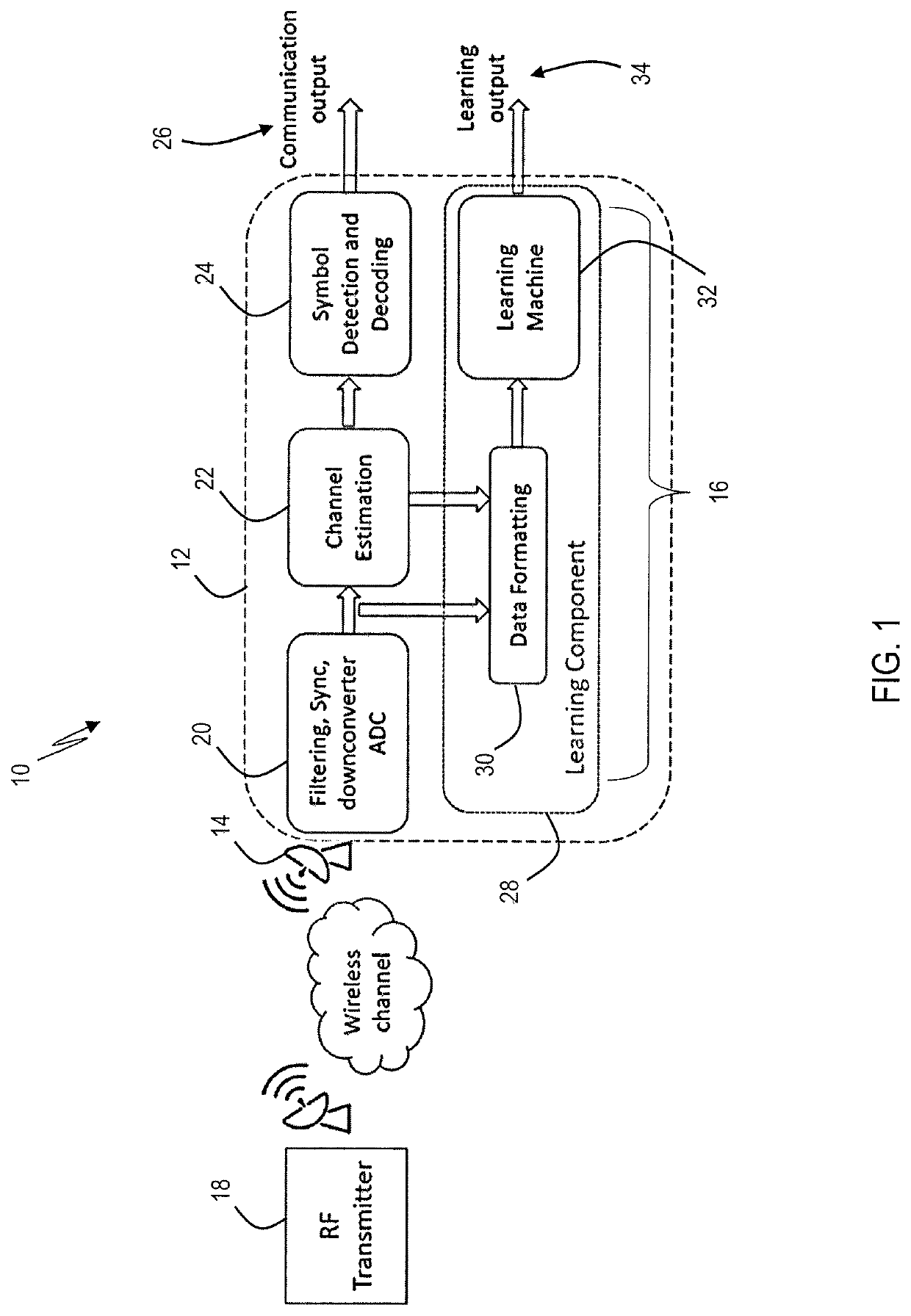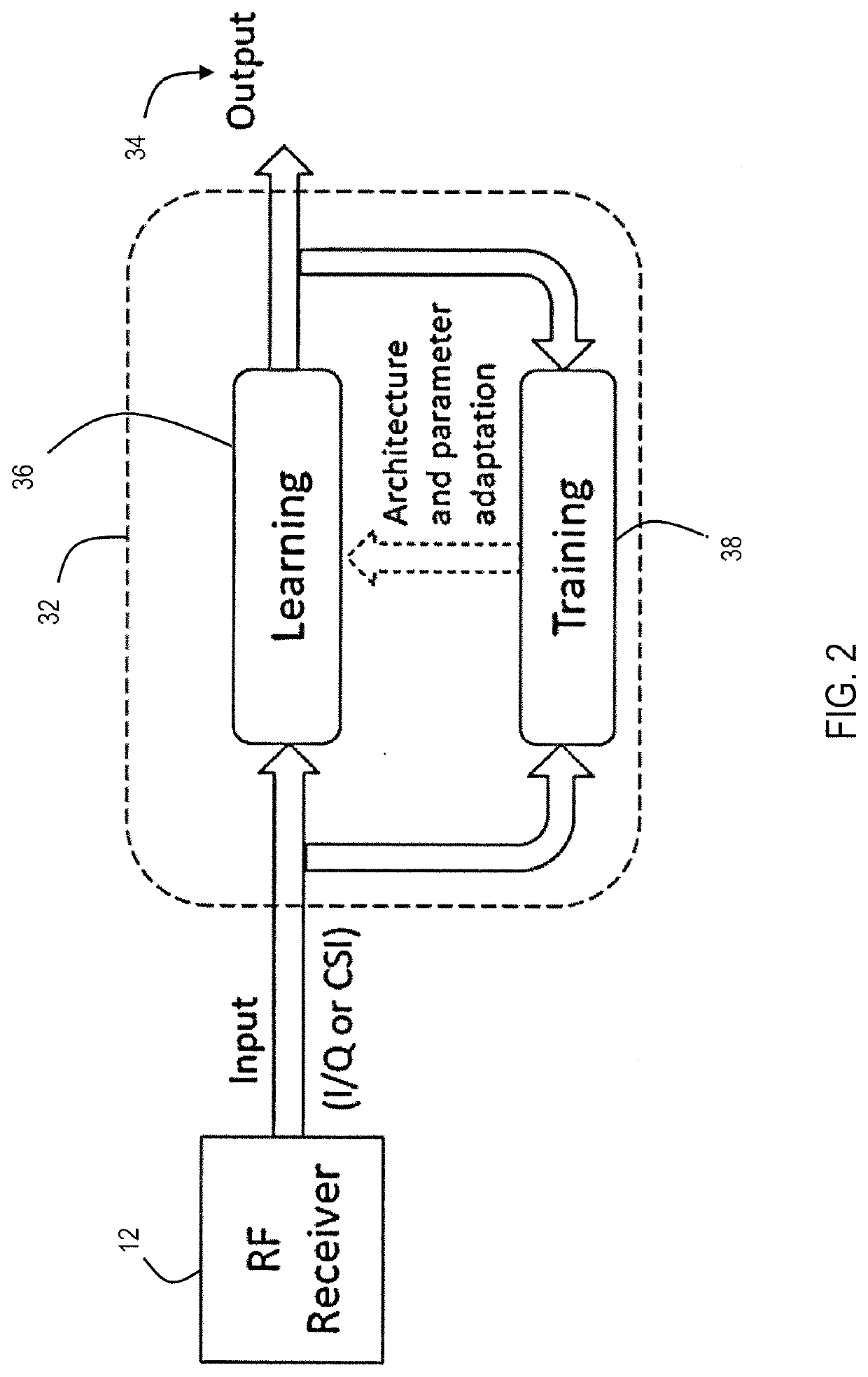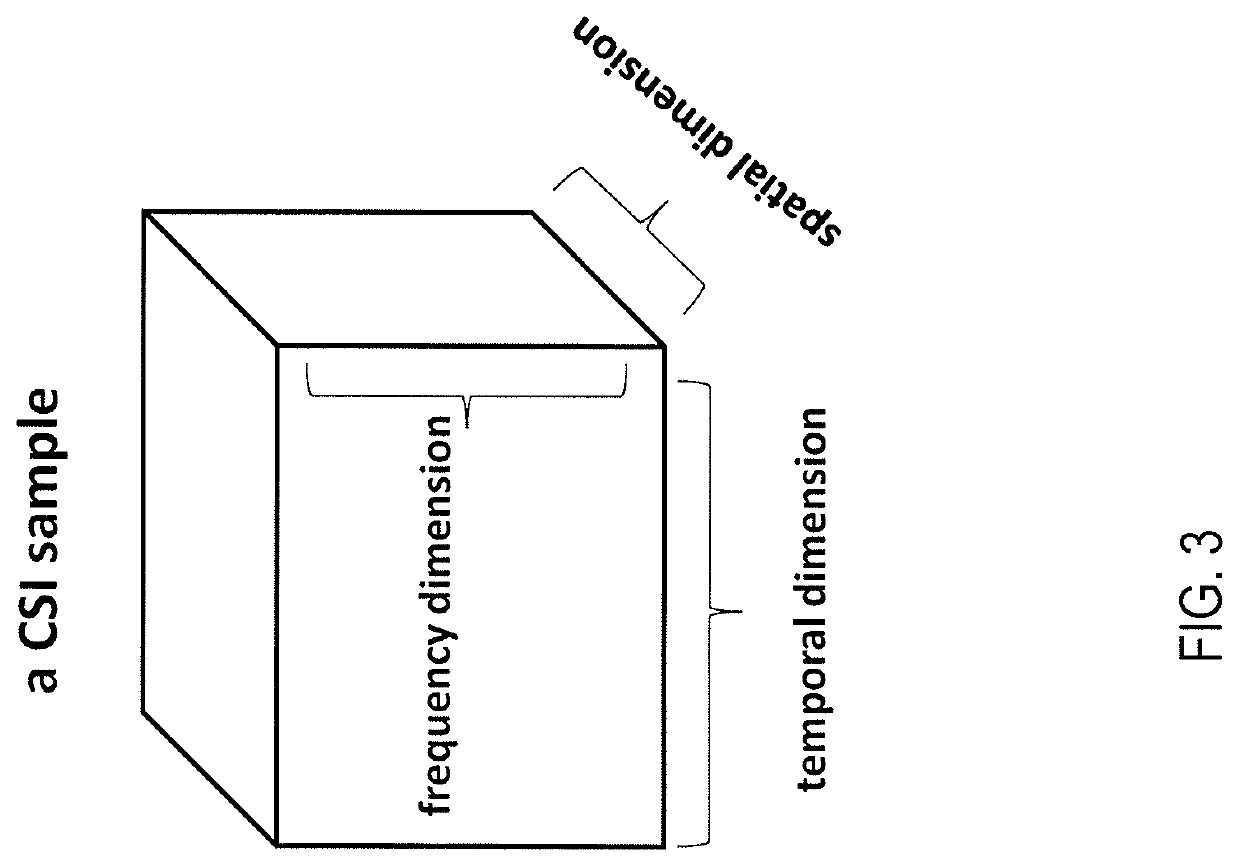Motion detection and classification using ambient wireless signals
- Summary
- Abstract
- Description
- Claims
- Application Information
AI Technical Summary
Benefits of technology
Problems solved by technology
Method used
Image
Examples
example
[0083]An exemplary communication system comprises a laptop (Thinkpad T410) as WiFi access point (AP) and one desktop (Dell OptiPlex 7010) as WiFi client. An Atheros 802.11n WiFi chipset, AR9580, and Ubuntu 14.04 LTS with built-in Atheros-CSI-Tool were installed on both computers. In the experiments, the AP sends packets at the rate of 100 pkts / s, while the client is recording CSIs using Atheros-CSI-Tool, i.e., the CSI sampling interval is roughly 10 ms. For each CSI, information from all 3 transmit antennas and 3 receive antennas were obtained and 14 evenly spaced subcarriers were extracted out of 56 subcarriers in a 20 MHz channel operating at channel 6 in the 2.4 GHz frequency band.
[0084]The diagram of the indoor environments used for testing the exemplary system are shown in FIGS. 17 and 18, where the transmitter and receiver are denoted by Tx and Rx respectively. There were multiple monitors on desks and multiple chairs on the floor which are not shown in this figure since their...
PUM
 Login to View More
Login to View More Abstract
Description
Claims
Application Information
 Login to View More
Login to View More - Generate Ideas
- Intellectual Property
- Life Sciences
- Materials
- Tech Scout
- Unparalleled Data Quality
- Higher Quality Content
- 60% Fewer Hallucinations
Browse by: Latest US Patents, China's latest patents, Technical Efficacy Thesaurus, Application Domain, Technology Topic, Popular Technical Reports.
© 2025 PatSnap. All rights reserved.Legal|Privacy policy|Modern Slavery Act Transparency Statement|Sitemap|About US| Contact US: help@patsnap.com



